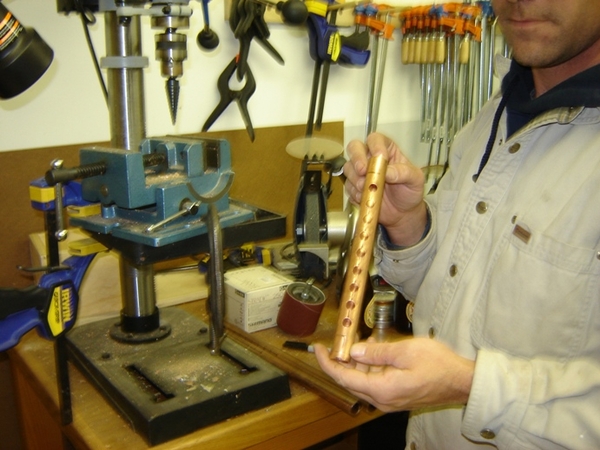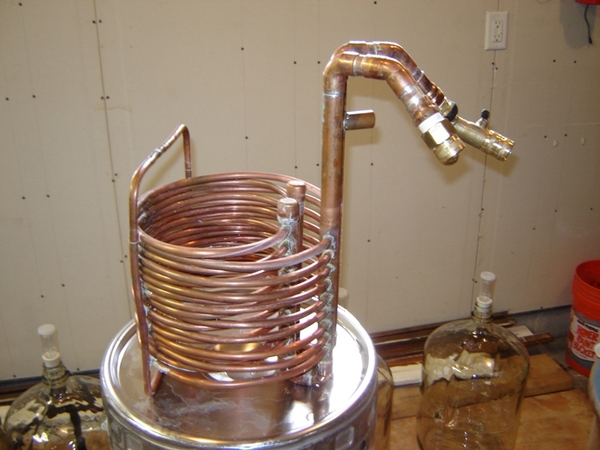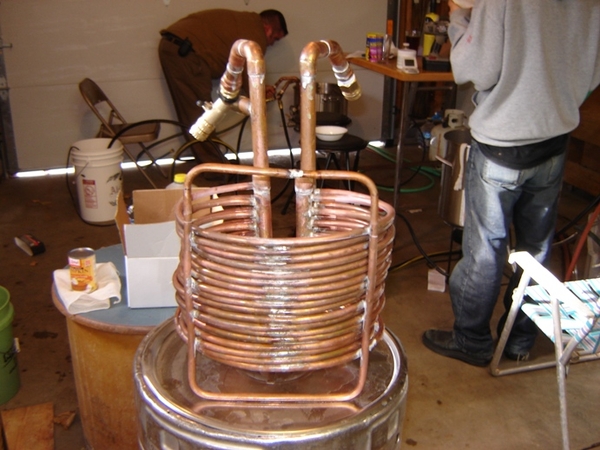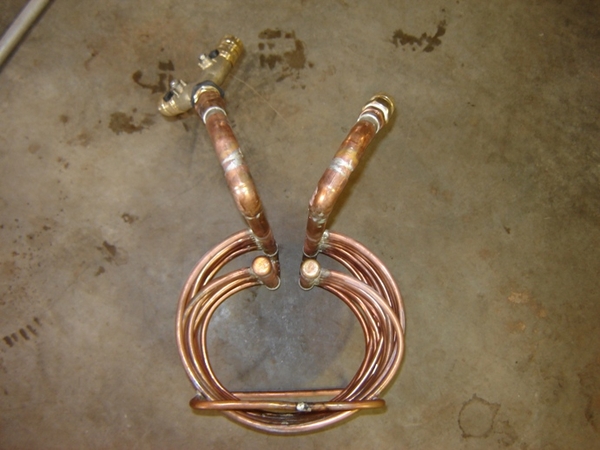In the search for the most efficient chill at the cheapest cost... I did what most would do... break out a calculator, start to do the math, get frustrated and call someone with more knowledge than my own. I called my dad (retired engineer) and showed him Nicksteck's chiller. This is what became of the conversation:
You will get a faster chill with less copper as long as you have a higher temp differential. In other words the longer the copper - the longer your chill water is exposed to the heat of the wort. this is actually (according to Dad) less efficient. Ever notice that when chilling, you go from boil to around 100 deg and then the chill rate slows? It's because at temps around 100 deg, there is a smaller differential in temps of wort vs. chill water. (at this point we switch from house water to recirculated ice water)
Now we also know you can go the other way by having too little copper for heat transfer, IE: 3ft of copper would take forever to chill 5 gal of wort. So what is the right amount of copper?
I'm about to build an IC chiller that's kind of like Nicksteck's, but with the following changes: I'll build, and record the outcome for future ref. I'll post my results.
2 each 3/4 inch copper input and output like Nickstecks.
16 each 1/4 inch ID copper at 28 inch lengths which would net me 37 feet 4 inches of heat exchange copper vs. his 85 ft of copper.
Now, 3/4 in. copper pipe = .44 square inches of area for flow. That is equal to 9 units of 1/4 in ID copper tube. I'm adding an additional 7 units, so there will be a drop in flow rate as soon as the water hits the 1/4in copper. The water should have enough exposure time to adequately transfer the heat while keeping the heat differential great enough to operate efficiently.
Ideas? Comments? Experience?
Science is good, Beer is great, Science & Beer together is awsome!















